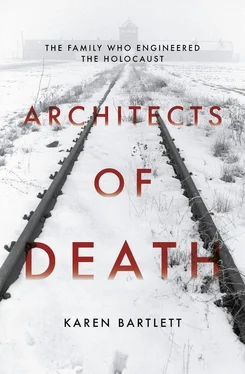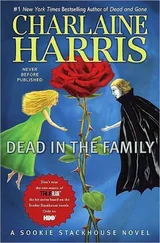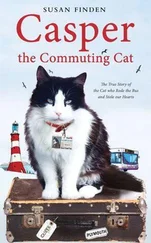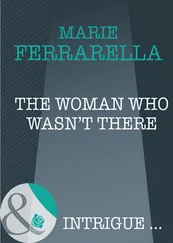In the following twelve years, Ludwig unsuccessfully embarked upon, and then discarded, a bewildering array of studies and possible careers. After leaving school he first set out to study mechanical engineering in Hannover, paying his way by working as a coal trimmer, tutor and bank assistant. Soon, however, he collapsed, suffering from gall bladder problems and the psychological strain of his estrangement from his mother. Leaving Hannover in bad health, Ludwig then attempted to continue his education elsewhere – trying out a range of courses in economics, business, sociology, law and journalism at universities in Berlin, Leipzig and Rostock. By the time he eventually joined Topf and Sons, Ludwig was supposedly studying for a PhD in malt production – but the truth was that in his many years of study Ludwig Topf never achieved a single qualification in any subject, nor did he successfully pursue an alternative career.
While Ludwig acted out the role of family playboy, who ‘looked and behaved like a film star’, [9] Schüle, op. cit., p. 64. AS footnote 5: AS interview with Udo Braun, 31 July 2001.
the burden of plodding productivity fell to his younger brother, Ernst Wolfgang, who was described as having the ‘pedantic, grudge-bearing’ countenance of an office worker. After taking his Abitur , Ernst Wolfgang undertook and completed training to become a merchant with Oskar Winter Ironwear Wholesalers in Hannover, and then added to his commercial understanding by completing six months of work experience, first at a bank in Erfurt and then at a malting company in Arnstadt. With solid experience under his belt, Ernst Wolfgang joined Ludwig in Leipzig, and graduated from commercial college with a business diploma in 1929.
Superficially, the two brothers could not have been more different, but their fraternal bond was strong. At every stage of their early education and career they invariably chose to move to the same city, and would sometimes share the same lodgings. Once they were ensconced as the directors of Topf and Sons, they lived separately – with Ernst Wolfgang moving into a rented apartment while Ludwig chose the more glamorous setting of a house in the Topf family park. At work, however, they fell back into their earlier pattern – choosing to share an office with desks that faced each other (perhaps also because neither entirely trusted the other.)
Ernst Wolfgang Topf was the first of the brothers to take up an official role with the company, joining the business at the end of 1929. His appointment came only after the death of Felix Paul – the last remaining director from Ludwig Topf Sr’s time in control. After the war, Ernst Wolfgang would claim that the strong dislike which existed between Felix Paul and the Topf brothers was caused by Paul’s anti-Semitism and the Topf brothers’ friendships with Jewish families; however, this was part of a larger narrative concocted by Ernst Wolfgang Topf to try and persuade the Soviet authorities that he was not guilty of Nazi war crimes. It is true, though, that Felix Paul disapproved of both brothers and did not speak to them or acknowledge them for years. Paul went out of his way to make sure that Topf and Sons did not come under the brothers’ control.
With Paul out of the way, however, Ernst Wolfgang Topf caved in under pressure from his mother to join the company – with Ludwig following in late 1931. Now aged twenty-eight, Ludwig Topf swapped his status of perpetual student for that of wealthy playboy industrialist, but he chose not to work in the area in which he was supposedly pursuing a PhD – malt production. Instead he focused on furnace construction, specifically, crematoria furnaces, working with Kurt Prüfer to associate the name of Topf and Sons with advanced cremation technology and dignity after death.
As the familial heirs of Ludwig Topf Sr it appeared that both brothers had finally taken up senior roles in the business, but they would have to overcome another significant hurdle to make sure that the spoils were theirs.
By the early 1930s, Germany was deep in recession. The German economy had enjoyed what seemed to be a brief period of stability in the mid-1920s after overcoming the economic crisis and hyperinflation of 1923. Paper money had been rendered worthless, employer–employee relations had broken down, France occupied large parts of Germany’s industrial heartland, and crime and unemployment rose dramatically. The agreement by the Weimar government to settle the question of reparations (effectively admitting that Germany had lost the First World War) ushered in a new era of foreign, notably American, investment – along with state intervention in public building projects and a social welfare state. Rising living standards went hand in hand with political support for parties that occupied the centre ground. However, the number of people now financially dependent on the government for welfare payments and war pensions meant that the Weimar Republic was, in fact, desperately overstretched and unable to cope with the advent of the Great Depression.
In March 1929, Germany was plunged into deflationary crisis with prices and output falling by one-fifth. When the government proved reluctant to implement economic measures out of fear of causing a ‘second great inflation’, the economic situation worsened with wages falling and unemployment rising until by the summer of 1932, 45 per cent of German trade union members were considered to be out of work.
Faced with such bleak circumstances, Topf and Sons, like many other businesses in Germany, found short-term remedies in cutting salaries and laying off staff, but it still struggled to pay its bills. As early as December 1930, Else Topf instituted the first pay-cut, slashing directors’ salaries by 17.5 per cent. Those earning more than 500 RM a month had their earnings reduced by 10 per cent. Only the lowest strata of workers, who earned less than 300 Reichsmarks a month, were left untouched. For the next three years salaries would be cut further while productivity dropped by a quarter – down from 4 million Reichsmarks in 1930 to only 1 million Reichsmarks in 1933.
Ernst Wolfgang had only joined the business at the end of 1929, but by April 1932 he and his mother, Else, had become estranged, with Else choosing to side with the company directors when they moved to dismiss both brothers from Topf and Sons by the end of that year. Although their departure took place during the worst of the economic turmoil, the reasons were less financial, than political. In the election of July 1932 the Nazis won 230 seats, making them the largest party in the Reichstag, which began a complicated series of negotiations that culminated in Hitler being named German Chancellor on 30 January 1933.
Ernst Wolfgang Topf would later point out that with trade debts of 98,000 RM there was no reason to stop paying creditors – instead Ernst Wolfgang and Ludwig had been ousted in a plot engineered by the Nazis and senior members of the company, under the leadership of authorised company officer and senior engineer Dr Edmund Spindler, to take control of the business themselves and set up a new company – Topf Furnace Construction, which they would control.
At first the plot appeared to be successful. Spindler and his associates told both the Chamber of Industry and the Bankruptcy Court that the losses incurred by the brothers at the company were unsustainable and that the company was unable to meet its debts. At the same time, Dr Edmund Spindler, a senior engineer and authorised officer of Topf and Sons (and a Nazi) spoke at a company meeting to denounce both brothers for ‘associating with Jews’ and inform the workers that the Topfs had lost their right to run the company.
Banned from the company premises, without resources, and estranged from their own mother who had, astonishingly, sided against them, Ernst Wolfgang and Ludwig decided to fight back and reclaim what they believed was rightfully theirs. Their battle to win back the company in 1933 would take on enormous importance in their own minds and they would be prepared to do anything to ensure that they took back their inheritance.
Читать дальше












